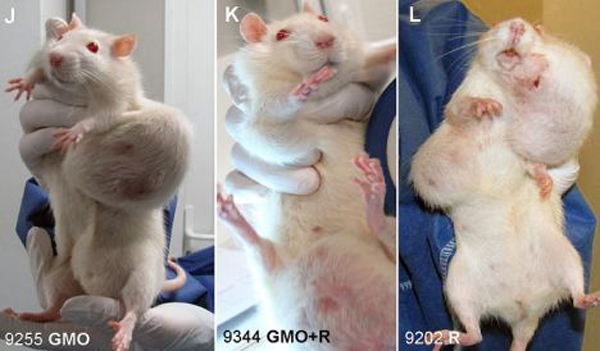This
article was reported in collaboration with the Investigative Fund at
the Nation Institute, where Barrett is a reporting fellow.
Though
Mitt Romney has been campaigning for president since 2006, it’s
alarming how little is known about critical chapters of his business
biography. Nothing spells that out more clearly than his ties to
Monsanto—the current target of a mid-September
Occupy nationwide action—whose
dark history features scandals involving PCBs, Agent Orange, bovine
growth hormone, NutraSweet, IUD, genetically modified (GM) seed and
herbicides, reaching back to the 1970s and ’80s. That’s when Monsanto
was the
largest consulting client of
Romney’s employer, Bain & Company, and when Romney helped move
Monsanto from chemical colossus to genetic giant, trading one set of
environmental controversies for another.
The romance between
Romney and Monsanto began back in 1977, when the recently minted Harvard
Law and Business School graduate joined Bain, the Boston-based
consulting firm launched in 1973, the same year Monsanto became one of
its first clients. One of Bain’s founding partners, Ralph Willard,
described to the
Boston Globe in 2007 how “Romney learned the
technical aspects of the chemical business so thoroughly that he sounded
as if he had gone to engineering school instead of business school,”
and that Monsanto executives soon began “bypassing” him to go directly
to Romney.This history matters not just because of the light it sheds on
Romney’s self-ballyhooed business experience but because of the litany
of Monsanto corporate objectives that clash with planetary concerns. If
Romney is elected, this bête noire of environmentalists will have a very
old friend in a very high place.
John W. Hanley, the Monsanto CEO
at the time, has said how “impressed” he was with the 30-year-old Mitt.
Hanley became so close to Romney that he and Romney’s boss Bill Bain
devised the idea of creating Bain Capital as a way of keeping Romney in
the fold. Unless Mitt was allowed to run this spin-off venture firm,
Hanley and Bain feared, he would leave. Hanley even contributed $1
million to Romney’s first investment pool at Bain Capital. Monsanto’s
Hanley is in fact the only business executive outside of the Bain
founding family to so shape Romney’s career—jumpstarting the two
companies, Bain & Company and Bain Capital, that account for all but
two years of Romney’s much-ballyhooed business experience. Bain and
Romney whispered in Monsanto’s ear until 1985, when Hanley’s successor
Richard Mahoney says he “fired” them and when Romney moved on to Bain
Capital.
A year before Romney began to work with Monsanto,
Congress passed a 1976 bill banning PCBs, a liquid chemical monopoly of
Monsanto’s, exposing the company to
an onslaught of litigation throughout
the Bain years. Monsanto was also besieged by charges that its decade
of Vietnam War defoliation with Agent Orange dioxins—branded by a Yale
environmentalist “the largest chemical warfare operation” in human
history—had contaminated as many as 10 million Vietnamese and American
people, leading to a $180 million settlement covering the claims of
52,000 troops in 1984.
Dr. Earl Beaver, who was Monsanto’s waste
director during the Bain period, says that Bain was certainly “aware” of
the “PCB and dioxin scandals” because they created “a negative public
perception that was costing the company money.” So Bain recommended
focusing “on the businesses that didn’t have those perceptions,” Beaver
recalls, starting with “life science products that were biologically
based,” including genetically engineered crops, as well as Roundup, the
hugely profitable weed-killer. “These were the products that Bain gave
their go-ahead to,” Beaver contends, noting that Romney was a key
player, “reviewing the data collected by other people and developing
alternatives,” talking mostly to “the higher muckety-mucks.”
But
Beaver, who left Monsanto and eventually became chair of the Institute
for Sustainability in New York, said that the Monsanto/Bain teams “did
not put an adequate emphasis on esoteric or societal factors” because
they were “focused on this quarter or that quarter or next year’s
financials.” People who have a long-term horizon, Beaver concluded,
“consider different factors than what’s going to be reported in the
stock section of the newspaper.”
The first Monsanto biotech
product, bovine growth hormone, became another headache for the firm,
crippling cows, alarming parents concerned about the health effect on
kids, meeting with rejection among developed countries outside the
United States and sparking bans by American retailers from Starbucks to
Walmart. Monsanto announced it invented the hormone in 1981, midway
through the Bain period, but didn’t get FDA clearance for it until 1993.
By 2008, the company got out of the business altogether, ostensibly
selling it for far less than it invested in the technology.
Now
the king of GM corn, soybean, alfalfa and other seeds, engineered to
resist Roundup and increase yield, Monsanto is awash in global disputes,
having lost two recent, at least $2 billion, court decisions in Brazil,
for example, where 5 million soy farmers sued them. The Brazilian
farmers’ issue is also a source of frustration for US farmers—the
contracts farmers are forced to sign pledging not to save seeds for
future harvests, a common farm custom that resale-fixated Monsanto has
hired a seed police army to stop.
While Monsanto can trot out its
own and FDA findings to support its seed safety claims, there are
independent studies linking its corn to organ damage, obesity, diabetes
and allergies. The company’s profits plunged in 2010 as evidence mounted
that GM seeds,
90 percent of
which originate with Monsanto, weren’t boosting yields as promised.
Consumer resistance has already forced Monsanto to retreat from the GM
potato, tomato, wheat, rice, flax seed and bio-pharmaceutical crops.
Peru recently banned GM products for ten years and Hungary destroyed all
its Monsanto cornfields, joining ninety countries that aggressively
monitor and restrict, or ban, GM imports, according to the Center for
Food Safety.
The Union of Concerned Scientists criticized the
absence of independent and long-term research findings on GM safety,
charging that we are placing “a huge wager” on this little-examined
technology. Monsanto’s onetime communications director shrugged his
shoulders to this kind of concern, telling the
New York Times:
“Monsanto should not have to vouchsafe the safety of biotech food. Our
interest is in selling as much of it as possible. Assuring its safety is
the FDA’s job.” In fact, Monsanto pressured the Reagan administration,
starting during the Bain years, to develop a friendly regulatory
framework it could exploit as a seal of approval.
The critical
shift to “life sciences” started in 1979, when Monsanto installed a
University of California biologist, Howard Schneiderman, as its research
director and began investing hundreds of millions a year in biotech
hormones and seeds. Monsanto’s website
reports that
by 1981—when Bain was intimately involved in determining the company’s
strategic direction—biotech was “firmly established as Monsanto’s
strategic research focus.”
Roundup Ready seeds, of course, are
inextricably tied to the success and safety of Roundup itself. But
“super-weeds” are developing a Roundup tolerance, requiring more and
more spraying to work, which is harmful ecologically and financially
damaging for farmers. Introduced in the Bain years with Bain boosting,
Roundup’s supposedly “biodegradable” and “nontoxic” claims have led to
false advertising findings in France and by the Attorney General of New
York. Studies are also now beginning to link Roundup to cancer and birth
defects, the first indication that it may be going the way of Lasso,
another Monsanto herbicide endorsed by Bain that was forced from the
market because of health hazards.
* * *
During the presidential primaries this past March, Romney named an
eleven-member Agricultural Advisory Committee that
was packed with Monsanto connections, including its principal
Washington lobbyist Randy Russell, whose firm has represented Monsanto
since its founding in the 1980s and has been paid
$2.4 million in lobbying fees since 1998.
Among
those also appointed to the panel were another Russell client and
Monsanto partner in the marketing of GM alfalfa, Land O’ Lakes CEO Chris
Policinski; and Chuck Conner, whose National Council of Farmer
Cooperatives (NCFC) is closely linked to Land O’ Lakes. Conner and
Policinski, an NCFC director, publicly supported Monsanto’s 2010
attempts to win USDA approval for its alfalfa. Other members of the
initial Romney council were Tom Nassif, whose Western Growers
Association
receives annual grants from
Monsanto, and A.G. Kawamura, the former California agriculture
secretary who championed Monsanto’s alfalfa despite a federal court
ruling in the state against it.
Romney has also cultivated close
relations with three Republicans who hail from Monsanto’s home state of
Missouri—Senator Roy Blunt, former governor Matt Bluntand former senator
Jim Talent. In 2011, Romney picked Roy Blunt to be his campaign’s point
man in the Senate and named Talent to his four-member economic policy
team. Matt Blunt, son of the senator, became a senior adviser at
Solamere Capital, the investment firm headed by one of Romney’s sons.
(Roy Blunt’s wife Abigail, a Romney bundler, is the in-house lobbyist
for Kraft Foods, also represented by Russell and a sometimes ally of
Monsanto’s on key food issues.) Monsanto, its spinoff Solutia, and
Russell’s firm have long been top donors to the three, contributing a
combined $246,170 to them over the years (Monsanto executives are modest
donors to Romney but give nothing to Obama).
Katie Smith, a
Talent aide for four years who was director of Missouri’s agriculture
department under Governor Matt Blunt until 2008, was also named to
Romney’s council. Smith is now director of public affairs for Osborn
& Barr, a Missouri-based public relations firm created by Monsanto
executives whose founding client was Monsanto. Matt Blunt was such a
champion of Monsanto’s GM products that its CEO presented him with the
annual leadership award of the Biotechnology Industry Organization, a
Monsanto-backed group. Talent is the co-chair of a Washington lobbying
and strategic advice firm whose clients include Land O’ Lakes and was
once a partner in a Missouri lobbying firm that represents Monsanto now.
Nebraska
senator Mike Johanns, a beneficiary of $9,500 in Monsanto-related
contributions, was selected by Romney to co-chair the advisory group.
Johanns was George Bush’s agriculture secretary in between his six years
as Nebraska governor and three years in the Senate. In 2002–03, he
headed two associations of governors, one of which included Romney, and
went abroad to push GM foods and assail European Union efforts to
require labeling of them. While Johanns ran USDA in 2005, it approved
Monsanto’s alfalfa without obtaining the minimal environmental impact
statement required under Reagan’s regulatory framework, a decision
overturned by the federal courts. Johanns’s agency did the same for
Monsanto’s sugar beets.
Johanns and Blunt joined all but one
Republican in the Senate, and many Democrats, in defeating Bernie
Sanders’s bill amendment this year to require GM labeling—disclosure
that’s favored by more than
90 percent of
polled Americans, the food safety arm of the United Nations and
sixty-one countries. Monsanto has so far spent $4.2 million to defeat a
labeling referendum on the ballot in California this November, more than
any other opponent, and several of the organizations connected to
members of Romney’s advisory council have also opposed the referendum.
President Obama supports a labeling requirement, though he’s done
nothing to make it happen, while Romney’s campaign declined to respond
to
The Nation’s questions about his position on labeling or the California referendum.
Romney
won’t answer our questions, or anyone else’s, about where he stands on
the two pending farm bills—the Senate version backed by Obama that
passed with overwhelming bipartisan support (including Johanns and
Blunt), or the
House bill that
made it through the agriculture committee with two Republican
amendments dubbed “Monsanto riders.” Having lost the alfalfa and other
GM lawsuits, Monsanto
spent more on lobbyists,
including Russell, than any other non-tobacco agribusiness and
convinced House Republicans to add these riders, which would virtually
immunize its products from regulation, allowing farmers to plant crops
even if a court has ordered an environmental review and short-circuiting
the reviews, as Johanns tried to do.
Congressmen Jack Kingston
and Frank Lucas, each of whom sponsored a Monsanto rider, were listed in
August as national co-chairs of a new general election committee called
the
Farmers and Ranchers for Romney coalition,
which also includes all eleven members of the March group and Roy
Blunt. Johanns, Conner and Nassif are among the six National Chairs of
the group, as is Romney’s recent Iowa tour guide Bill Northey, the
elected agriculture secretary whose biggest donors include Monsanto
($12,000). In a hotly contested 2010 race, Republican Northey was backed
by Democratic lobbyist Jerry Crawford, whose firm made almost $1
million as Monsanto’s top Iowa-based lobbyist.
The Romney
coalition also includes John Block, Russell’s mentor who appointed him
deputy secretary when Block was Reagan’s agriculture secretary in the
’80s and now hosts a national radio show that’s sponsored by Monsanto
and features denunciations of Monsanto opponents as “environmental
wackos.” The president of the United Fresh Produce Association and the
past president of the National Pork Producers Council—two other Russell
clients and Monsanto allies—are also part of the Romney group. And the
list includes the past head of the American Soybean Association, which
backed Monsanto’s riders to the farm bill; and Steve Troxler, North
Carolina’s agriculture commissioner, who collected $3,000 in Monsanto
contributions, grows GM soybeans (probably Monsanto’s) on his own farm,
and sponsored a bill to stop counties from banning GM foods.
Another
coalition member, Jay Vroom, heads a Monsanto-funded, aggressively
pro-GM trade association of pesticide makers called CropLife America, a
large donor to Kingston and Lucas. The two top directors of CropLife’s
regional partner in St. Louis e-mailed associates that they “shuddered”
when they learned that Michelle Obama was planting an organic garden on
the White House lawn, writing her a letter suggesting that she was
impugning chemical agriculture. Monsanto itself has been coy about
Obama, especially after he appointed its longtime ally former Iowa
governor Tom Vilsack as agriculture secretary. Unlike his USDA
predecessor Johanns, Vilsack put Monsanto’s alfalfa through a
court-mandated EIS process, but then deregulated it entirely. Close to
Monsanto lobbyist Crawford, Vilsack has also partially deregulated sugar
beets.
As deliberately vague as Romney is, he’s moved publicly in
Monsanto’s direction on the company’s genetically engineered ethanol
and farm subsidies, appears aligned with it on labeling, and his
spokesman Shawn McCoy said this month that the candidate was “concerned
by the effect that the Obama administration’s crushing onslaught of
regulations is having on agriculture,” a suggestion that he might favor
the regulatory relief in the Kingston/Lucas riders.
* * *
Frank
Reining, the Monsanto executive who was designated by Hanley in 1973 to
interface with Bill Bain and his partners, says Bain’s “relationship
with Monsanto” began “before Bain even existed,” noting that it was
among the firm’s first and biggest clients. Patrick Graham, a Bain
founder, agrees that Monsanto was an “early client,” soon delivering
millions in annual fees. According to Reining and eleven other former
Monsanto and Bain executives interviewed for this article, Bain took a
companywide approach to its restructuring of Monsanto, focusing over the
succeeding years on one product after another—“confirming,” as Reining
put it, the corporate consensus to get out of polyester, plastics and
synthetic fibers.
Just as job reductions would later become a
common, controversial result of Bain Capital investment, Monsanto went
from a peak of 64,000 employees in 1979 to 20,000 today, a consequence
in part of the $4 billion of businesses that Bain, Hanley and others
decided to dump. While the press office at Monsanto refused to answer
most of our questions, one current official said that Bain “worked in
divestitures, acquisitions, streamlining, layoffs and cost reductions.”
Earle
Harbison, who ran five divisions of Monsanto during the Bain years and
eventually became its president, says: “Romney was part of the team that
came in to study the whole company, and they worked day and night. They
were down in the factories, the sales offices, accounting systems, the
whole works.” Harbison says he and Romney “had at least a dozen
meetings,” and that the Bainies were “armed with a bunch of flip
charts.”
Arthur Fitzgerald, another former top executive, says:
“Romney was involved in several individual projects. I remember Romney
only because he was one of the leaders and stuck out as someone who was
particularly curious.” Hanley’s successor Mahoney said Bain “did some
good work” but that he dumped them because “the consultants were getting
in my hair.” Asked about Romney, the press-shy Mahoney would only say:
“One presidential person made calls on occasion as did many Bain
executives.”
Graham, who claims credit for recruiting Romney to
Bain, described him as “an important guy in delivering the work” at
Monsanto, saying he “cut his teeth” at the company. Graham also laid out
how he and the Bain team worked with Monsanto: “We worked on the seed
business, the herbicide business, some of the basic chemical businesses.
We’re kind of the right-hand man. We present to the board of directors.
We’re friends and partners. We understood it down to its roots.” Bain’s
brass, recalled Graham, would meet “Hanley and his five top people
every time we went to St. Louis,” which he said was as often as “two to
three times a week.”
Dan Quinn, another former partner recruited
at Bain by Romney in 1983, called Monsanto a “prized” client that Bain
“thought of as one of their biggest successes.” Romney, says Quinn, was
“a key framer “ of the continuing conversation with Monsanto, especially
“on the marketing side,” where he was “in charge of several of those
teams,” just a notch below the Bain founders in the chain of command.
The
most important contribution Bain made to Monsanto, Graham contends, was
concluding that “the biggest opportunity” was to bring “an entirely new
value product,” namely biotech and herbicides, “to the whole farming
industry in America, soybeans and stuff.” Graham exalts in what Bain
did—saying it “completely changed the economics of farming in America”
and made Monsanto “the biggest agricultural business in the world.” He
concedes that the GM seeds, herbicides and other products were “Hanley’s
vision,” adding “we did the analysis to make him comfortable that it
was right and how to do it.”
John Qualls, who worked closely with
Bain in Monsanto’s office of economic forecasting, credits the
consulting firm with looking “at the whole schmear,” but adds they were
particularly focused on getting “the cash cow” product lines, mostly
chemicals, to “funnel” their profits into “the wildcats, the comers,”
like biotech. “The major thing that I think Bain contributed to was the
division of Monsanto into two major units and spinning them off,” says
Qualls, though he acknowledges that the actual spinoff didn’t occur
until 1997, when Monsanto created a freestanding company called Solutia,
run by ex–Monsanto brass and selling Monsanto’s remaining chemical
commodities. “It was a natural evolution” of Bain’s strategy, he said,
with “Bain picking the stars” early on, including biotech and Roundup,
that wound up staying with Monsanto, while Solutia was left with “the
superfund cleanup stuff and the environmental disasters.” (Solutia,
which filed for bankruptcy in 2003, was recently acquired by Eastman
Chemical.)
Combined with Graham’s analysis, this would make Bain,
and consequently Romney, the doctors whose surgery eons ago is
responsible for the Monsanto we know today, a financial giant whose
biotechnology products are enormously controversial all over the world.
When
The Nation questioned
Monsanto spokeswoman Kelli Powers about the role played by Bain and
Romney at the company, she said that “Monsanto is a different company
than the one” of the Bain period. That’s partially because of the
Solutia spinoff and partially because the “Old Monsanto” briefly went
through two acquisitions around 2000, only to recreate itself in 2002.
But the “New Monsanto” has many of the same product lines, facilities
and executives as the old one, and much of the same problems.
Geneva-based Covalence
ranked the company dead last of
581 multinationals in its 2010 reputation and ethics index, which is
distributed by Reuters and Bloomberg. Powers said a search of its
archives found “no reference to Bain anywhere.”
Research
assistance was provided by Danielle Bernstein, Loretta Chin, Alina
Mogilyanskaya, Joseph O'Sullivan, Nadia Prupis, Stephanie Rogan and
Elizabeth Terry.


 Tuesday, September 25, 2012
Tuesday, September 25, 2012


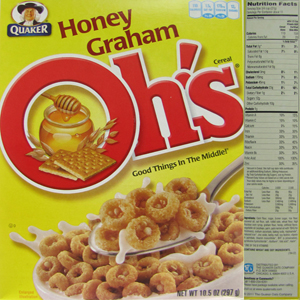

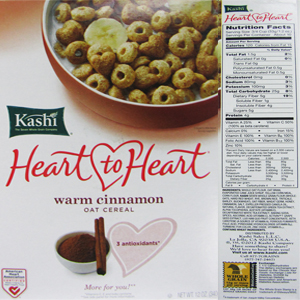
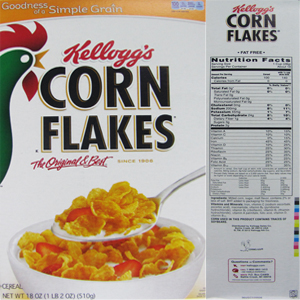

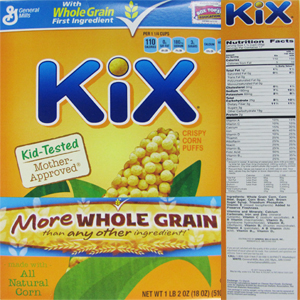

 If
you buy breakfast cereal, and you don't want to eat Monsanto's GM corn,
always choose cereals from Nature's Path. This is my No. 1 most highly
trusted cereal company.
If
you buy breakfast cereal, and you don't want to eat Monsanto's GM corn,
always choose cereals from Nature's Path. This is my No. 1 most highly
trusted cereal company.